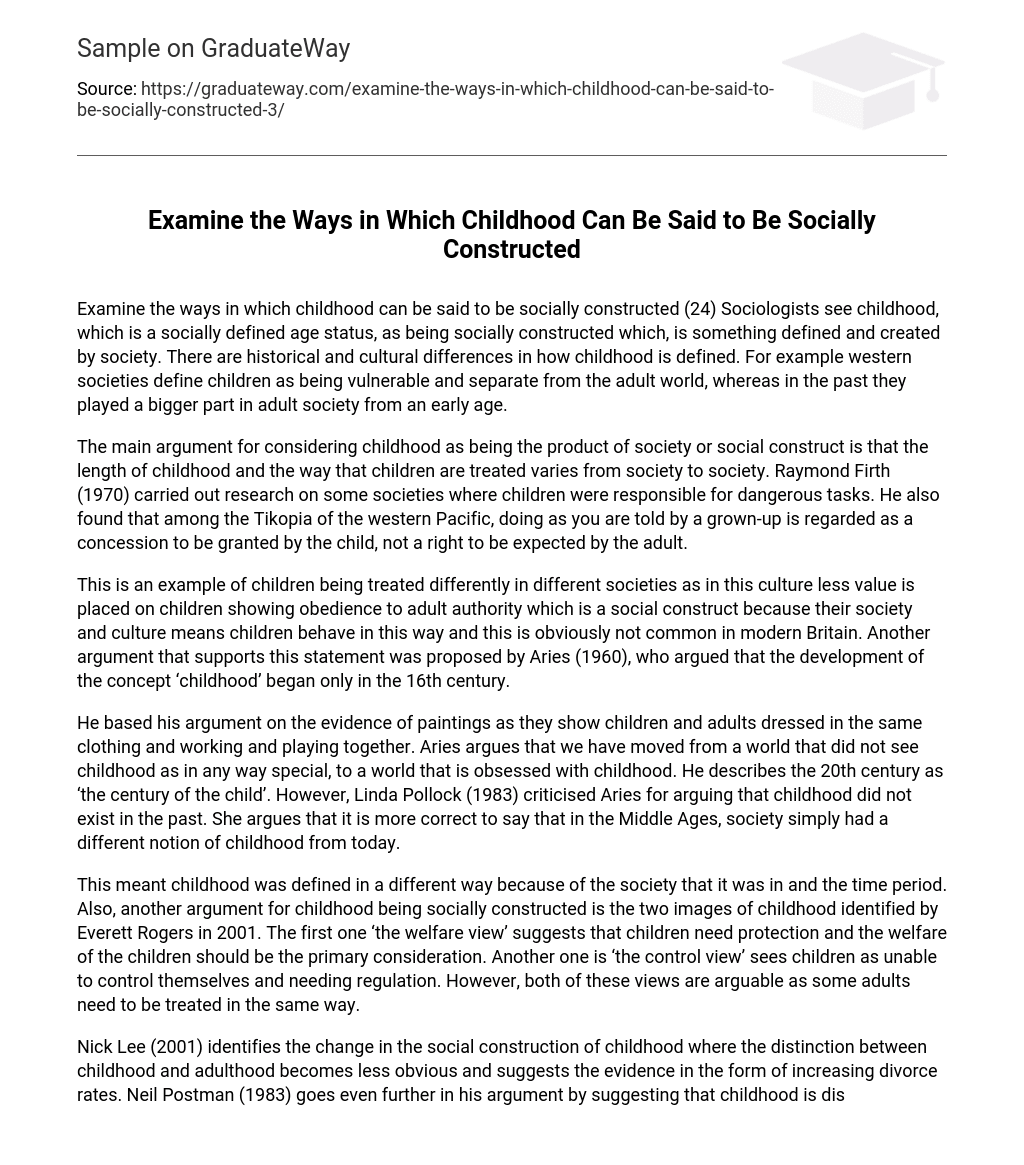Examine the ways in which childhood can be said to be socially constructed (24) Sociologists see childhood, which is a socially defined age status, as being socially constructed which, is something defined and created by society. There are historical and cultural differences in how childhood is defined. For example western societies define children as being vulnerable and separate from the adult world, whereas in the past they played a bigger part in adult society from an early age.
The main argument for considering childhood as being the product of society or social construct is that the length of childhood and the way that children are treated varies from society to society. Raymond Firth (1970) carried out research on some societies where children were responsible for dangerous tasks. He also found that among the Tikopia of the western Pacific, doing as you are told by a grown-up is regarded as a concession to be granted by the child, not a right to be expected by the adult.
This is an example of children being treated differently in different societies as in this culture less value is placed on children showing obedience to adult authority which is a social construct because their society and culture means children behave in this way and this is obviously not common in modern Britain. Another argument that supports this statement was proposed by Aries (1960), who argued that the development of the concept ‘childhood’ began only in the 16th century.
He based his argument on the evidence of paintings as they show children and adults dressed in the same clothing and working and playing together. Aries argues that we have moved from a world that did not see childhood as in any way special, to a world that is obsessed with childhood. He describes the 20th century as ‘the century of the child’. However, Linda Pollock (1983) criticised Aries for arguing that childhood did not exist in the past. She argues that it is more correct to say that in the Middle Ages, society simply had a different notion of childhood from today.
This meant childhood was defined in a different way because of the society that it was in and the time period. Also, another argument for childhood being socially constructed is the two images of childhood identified by Everett Rogers in 2001. The first one ‘the welfare view’ suggests that children need protection and the welfare of the children should be the primary consideration. Another one is ‘the control view’ sees children as unable to control themselves and needing regulation. However, both of these views are arguable as some adults need to be treated in the same way.
Nick Lee (2001) identifies the change in the social construction of childhood where the distinction between childhood and adulthood becomes less obvious and suggests the evidence in the form of increasing divorce rates. Neil Postman (1983) goes even further in his argument by suggesting that childhood is disappearing in the modern society under the influence of the media. This view may also be criticised as there are many laws protecting children and childhood from violence as well as the ‘water shed’ which protects them from the adult world. In conclusion, there are numerous researches proving that childhood is a social construction.
The view of childhood in modern day, western society as it being a separate age-status is not found in all societies. It is not universal. Stephen Wagg (1992) said: ‘Childhood is socially constructed. It is, in other words, what members of particular societies, at particular times and in particular places, say it is. There is no single universal childhood, experienced by all. So, childhood isn’t “natural” and should be distinguished from mere biological immaturity’. Childhood is what each society makes it to be. Therefore it is a social construct.





